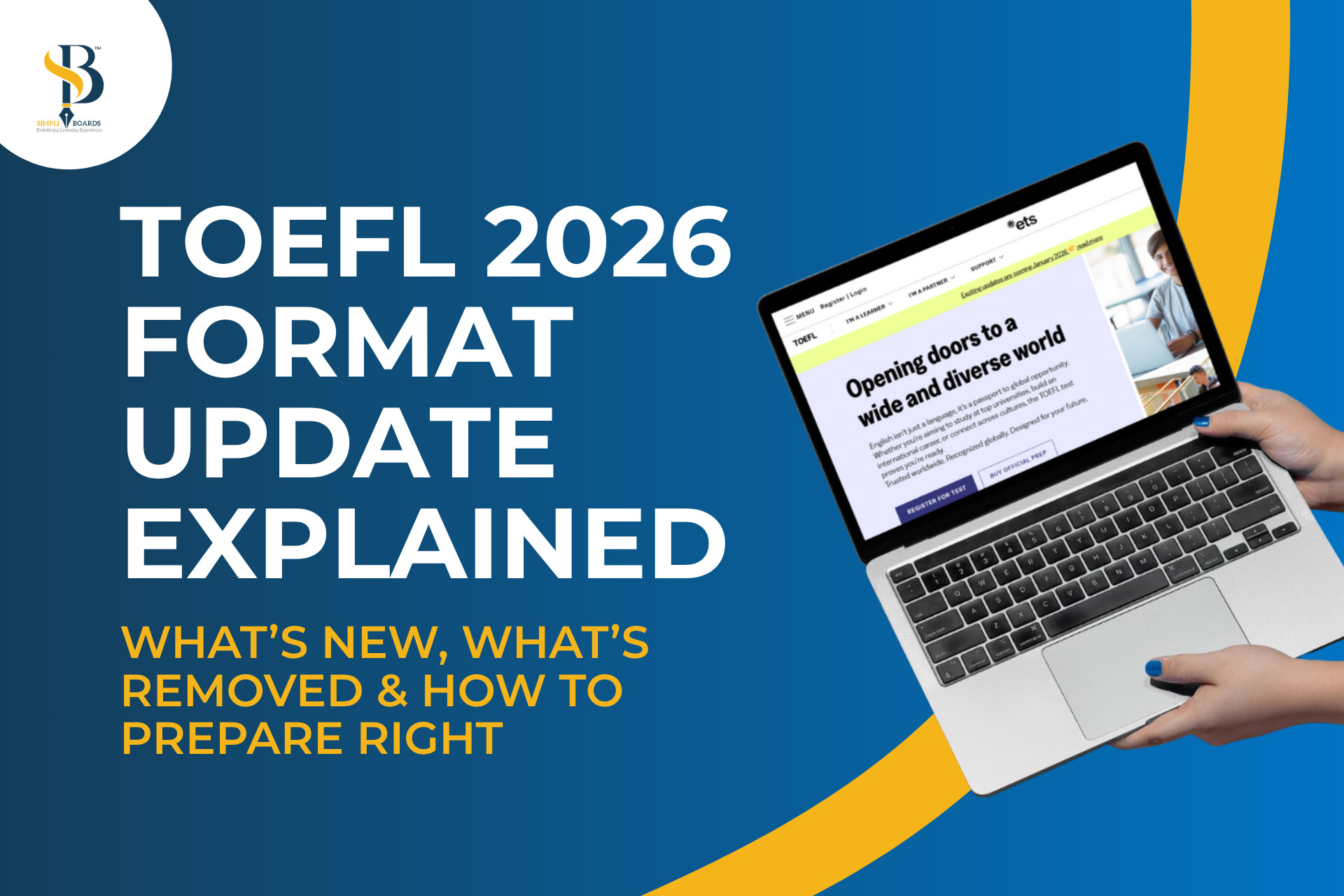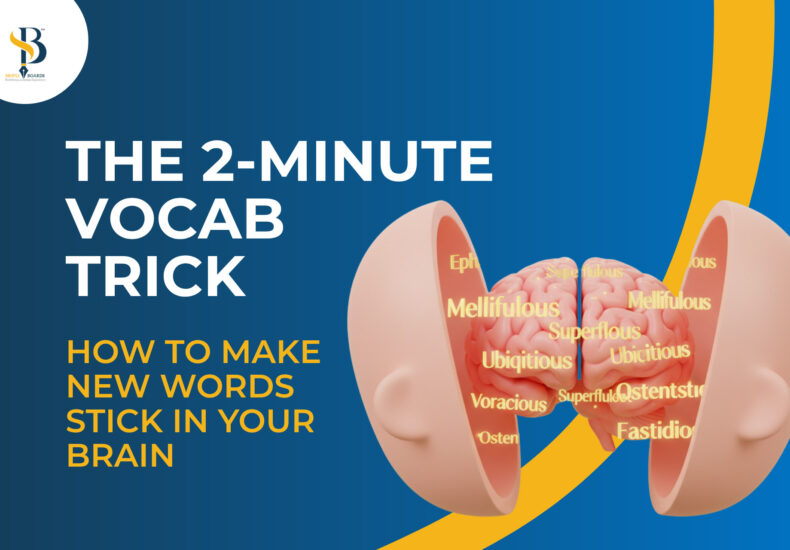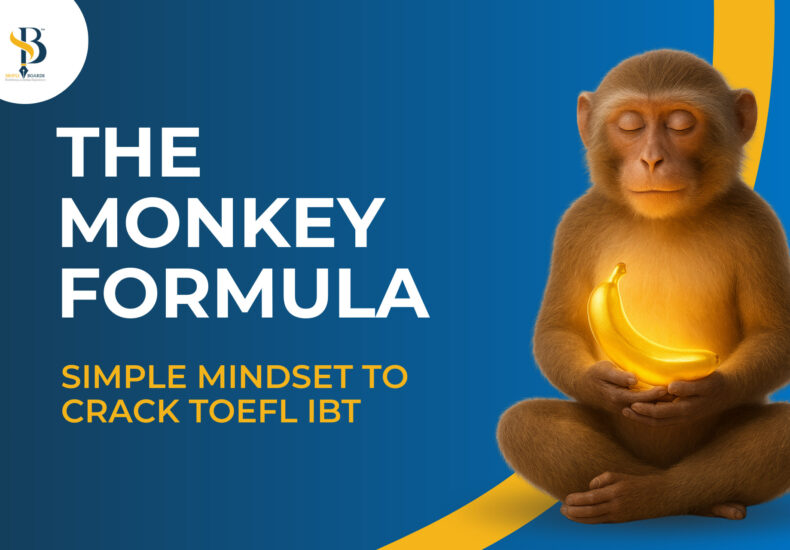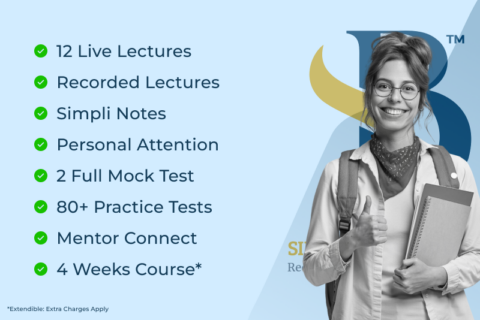
TOEFL iBT 2026 Format Changes: Everything Students Need to Know
Written By:
Mr. Wangdi Gyalpo Bhutia
Table of Content:
- Introduction
- Why This Change Matters to You
- New TOEFL iBT 2026 Test Format Breakdown
- Test Length Summary
- TOEFL iBT 2023 vs. 2026: Format Comparison Chart
- NEW Scoring Format ( From Jan. 21, 2026)
- Why ETS is Doing This
- What Should Students Start Doing Now?
- Frequently Asked Questions (FAQ)
- Final Thoughts
Introduction: Big Changes Are Coming to the TOEFL iBT
If you’re planning to take the TOEFL iBT in 2026, you need to know this: The English Testing System (ETS) is giving the exam a major overhaul starting January 21, 2026.Therefore, anyone testing on or after this date will take the new version of the test, adaptive-format TOEFL iBT worldwide. The new format is shorter, more intuitive, and bears a striking resemblance to the TOEFL Essentials Test.
“Here’s the most surprising part? The previous integrated writing task is no longer part of the exam.“.”

Whether you’re a seasoned test prep student or just starting your TOEFL journey, this blog breaks down every section of the 2026 TOEFL iBT — so you know what to expect and how to prepare effectively.
Why This Change Matters to You
“Gone are the previous long, standalone, complex integrated writing task.” Instead, ETS has streamlined the TOEFL iBT to make it more practical, efficient, and arguably more accessible — especially for students unfamiliar with American academic writing conventions.
These changes aim to better evaluate how well you can:
- Understand real-world English (not just academic English),
- Respond naturally to everyday and academic situations, and
- Communicate effectively using functional, digital-age language skills.
New TOEFL iBT 2026 Test Format Breakdown
Let’s look at each section, task by task, and highlight what’s new.
Reading Section (18–27 minutes)
Total Tasks: 3
- Complete the Words
A “fill in the missing letters” task, similar to what you’ll find on the Duolingo English Test.
→ Skill tested: vocabulary recognition and spelling - Read in Daily Life
You’ll read short, non-academic texts (15 to 150 words) like posters, menus, invoices, or social media snippets — and answer multiple-choice questions (MCQs) about them.
→ Skill tested: real-world reading comprehension
Read an Academic Text
You’ll read a ~200-word academic passage and answer five MCQs.
→ Skill tested: traditional TOEFL-style academic reading
Writing Section (23 minutes)
Total Tasks: 3
- Build a Sentence
Unscramble jumbled words to form a grammatically correct sentence. These will be student conversation snippets.
→ Skill tested: syntax and sentence structure - Write an Email
You’ll be given a scenario and 7 minutes to write an appropriate email.
→ Skill tested: functional writing & tone
Writing for an Academic Discussion
This task remains unchanged from the current TOEFL format.
→ Skill tested: structured academic expression
Listening Section (18–27 minutes)
Total Tasks: 4
- Listen and Choose a Response
Listen to one sentence and choose the most appropriate response from four options.
→ Skill tested: conversational awareness - Listen to a Conversation
A short conversation (~10 turns) about everyday life. Followed by comprehension questions.
→ Skill tested: interaction in daily situations - Listen to an Announcement
Hear a classroom or campus announcement, then answer MCQs.
→ Skill tested: public spoken English comprehension
Listen to an Academic Talk
A lecture of ~100–250 words. Followed by questions.
→ Skill tested: academic listening and memory recall
Speaking Section (8 minutes)
Total Tasks: 2
- Listen and Repeat
Listen to 7 individual sentences and repeat each one.
→ Skill tested: pronunciation and fluency
Take an Interview
You’ll be asked 4 questions on a topic. You’ll have 45 seconds per response — with no preparation time.
→ Skill tested: spontaneous speaking under time pressure
Test Length Summary
| Section | Time Range |
|---|---|
| Reading | 18-27 minutes |
| Listening | 18-27 minutes |
| Writing | 23 minutes |
| Speaking | 8 minutes |
| Total | 67-85 minutes |
This is a significant reduction compared to earlier TOEFL tests, which could take up to 2 hours.
TOEFL iBT 2023 vs. 2026: Format Comparison Chart
| Features | TOEFL iBT 2023 | TOEFL iBT 2026 |
|---|---|---|
| Total Test Time | ~ 2 hours | 67-85 minutes |
| Integrated Tasks | Yes | No |
| Integrated Writing | Yes | Changed (Academic Discussion, Email) + Sentence Building |
| Speaking Prep Time | 15-30 seconds | None |
| Reading Length | ~ 700 words/passage | 150-200 words max |
| Task Types | Traditional Academic | Academic + Real Life |
| Similar to TOEFL Essentials? | Not much | Quite Similar |
NEW Scoring Format ( From Jan. 21, 2026):
| Section | Score Range |
|---|---|
| Reading | 1.0 to 6.0 (in 0.5 steps) |
| Listening | 1.0 to 6.0 |
| Speaking | 1.0 to 6.0 |
| Writing | 1.0 to 6.0 |
| Total | Average of 4 section—- 1.0 to 6.0 |
Dual Reporting of Scores: (Transitional Period: 2026-2028):
For 2 years (until 2028), ETS will also report scores using the current 0-30/120 system alongside the new one to help institutions adjust. So, you will receive BOTH:
1. A 1.0-6.0 band score (new primary system)
2. A 0-30 per section + 120 total
Why ETS is Doing This
- More intuitive: Similar to IELTS band scoring ( 1.0-9.0), easier for students and universities to interpret.
- Alignment with Common European Framework of Reference for Languages (CEFR): Clear mapping to A1-C2 proficiency levels.
- Flexibility: Adaptive test logic works better with scaled bands than fixed score points.

What Should Students Start Doing Now?
Here’s how you can stay ahead of the curve:
- Download ETS sample tests
- Practice functional English (menus, texts, announcements)
- Record yourself answering random questions in 45 seconds
- Write short emails daily based on real scenarios
Use word games and Duolingo-like apps to strengthen vocabulary.
The earlier you familiarize yourself with the 2026 test, the more confident you’ll feel walking into the test center.
Frequently Asked Questions (FAQ)
Although it is entirely subjective; however, speaking objectively, not necessarily easier — but definitely shorter and more practical. The tasks now focus more on real-life usage of English than lengthy academic arguments.
Yes! The new format takes effect only from January 21, 2026. Any test taken before that will follow the current format.
No, universities will continue to accept TOEFL iBT scores regardless of the format — as long as they’re official ETS scores.
“The previous Integrated Writing task (where you summarized a reading and a lecture) has been replaced by shorter, more task-oriented writing tasks like emails and sentence-building. However, the ‘Writing for an Academic Discussion’ task remains and still assesses your ability to express academic ideas within a given context, functioning as an integrated component of the new Writing section.“
Some features (like “Complete the Words”) resemble the Duolingo format, but TOEFL iBT still maintains a more structured, academic framework overall.
Final Thoughts: Be the First to Adapt, Not the Last to React
The 2026 TOEFL iBT isn’t just a new format — it’s a new mindset. One that focuses on efficiency, real-world utility, and confidence in expression.
Whether you’re a student aiming for Ivy League schools or just need to meet English proficiency requirements, this new format could work in your favor — if you start preparing smartly.
Ready to conquer the new TOEFL iBT 2026? Let the preparation begin.
Be it for
- the Current TOEFL Preparation or
- the Upcoming New TOEFL Preparation.
-
TOEFL
12 Live Lectures Recorded Lectures Trained by Certified Mentors Small Batch for Personal …CA $700.00Original price was: CA $700.00.CA $225.00Current price is: CA $225.00. Add to cart
Related posts
 Online Course
Online Course Build a Strong English Vocabulary the Fun and Easy Way
 Online Course
Online Course Monkey Formula to crack TOEFL iBT
 Online Course
Online Course 


